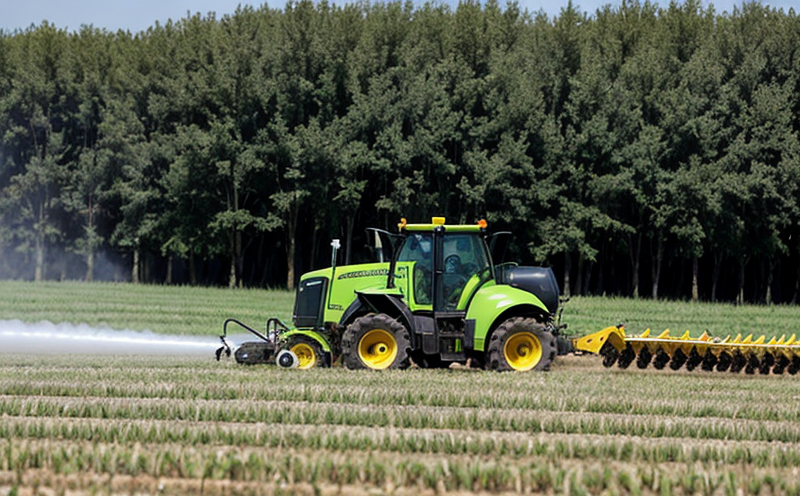Oxyfluorfen Residue Testing in Crops Validation Method Development Test
Validation of methods for detecting oxyfluorfen residues in crops is critical to ensuring food safety and regulatory compliance. Oxyfluorfen is a widely used herbicide that, when applied incorrectly or at excessive rates, can lead to contamination of harvested produce. This contamination poses serious health risks if the residues are not detected and removed through rigorous testing.
The process involves several steps: sample collection from crops, extraction, purification, and analysis using advanced analytical techniques such as Liquid Chromatography Tandem Mass Spectrometry (LC-MS/MS). The aim is to accurately measure oxyfluorfen levels in parts per million or even parts per billion. This ensures that the crop meets international standards for food safety.
The laboratory adheres strictly to ISO, ASTM, and other internationally recognized standards when performing these tests. These standards provide a benchmark for accuracy and reliability of results, ensuring consistent quality across different batches of crops tested over time. The use of validated methods also helps in maintaining consistency during product development stages where formulations are being optimized.
Our expertise lies not just in executing the tests but also in providing recommendations based on our findings. For instance, if residues exceed acceptable limits set by local or international regulations, we can advise farmers on best practices to minimize future contamination issues. Additionally, our team works closely with researchers and agricultural experts to innovate new testing protocols that are more efficient yet equally effective.
To achieve this level of precision, we employ state-of-the-art instrumentation including LC-MS/MS systems which allow for high sensitivity detection capabilities necessary for identifying even trace amounts of oxyfluorfen in complex matrices like soil, water, and plants. Our highly trained staff ensures that every step from sample handling to final report generation adheres strictly to prescribed procedures.
By leveraging cutting-edge technology and experienced personnel, our laboratory provides reliable data on oxyfluorfen residues which play a crucial role in safeguarding public health while supporting sustainable agricultural practices.
Industry Applications
| Application Area | Description |
|---|---|
| Farmers and Growers | To ensure compliance with regulatory requirements. |
| Retailers | To verify the safety of produce sold to consumers. |
| Regulatory Bodies | To enforce standards and protect public health. |
| Agricultural Research Institutions | To develop safer herbicide formulations with reduced residue impact. |
| Processing Plants | To monitor incoming raw materials before processing into end products. |
Environmental and Sustainability Contributions
The ability to accurately detect oxyfluorfen residues in crops is essential for environmental protection. By identifying contaminated areas early, corrective actions can be taken promptly to prevent further spread of the herbicide into ecosystems outside cultivated fields. This reduces potential harm to non-target species such as beneficial insects or nearby water bodies.
In terms of sustainability, accurate residue testing supports more sustainable farming practices by enabling better management decisions regarding pesticide usage. Farmers who know exactly how much oxyfluorfen remains in their crops can make informed choices about whether they need additional applications or if it's safe to proceed with harvesting and marketing the produce without causing harm.
Furthermore, this service contributes significantly towards achieving sustainable development goals by promoting responsible use of resources and minimizing adverse effects on both human health and natural environments.
Competitive Advantage and Market Impact
For farmers, our service offers peace of mind knowing that they are adhering to all relevant regulations. This builds trust with customers who demand transparency about the safety of their food products. In competitive markets where consumers increasingly seek assurance regarding product quality, this capability can be a key differentiator.
Retailers benefit from being able to offer certified safe produce, enhancing brand reputation and customer loyalty. Regulatory bodies gain valuable insights that help them enforce stricter controls if necessary, thereby protecting public health more effectively.
Agricultural research institutions profit by having access to precise data which aids in refining herbicide formulations aimed at reducing environmental impacts while maintaining efficacy against weeds. Processing plants can ensure consistent quality across batches knowing that incoming raw materials meet specified criteria before processing into finished goods ready for market distribution.





